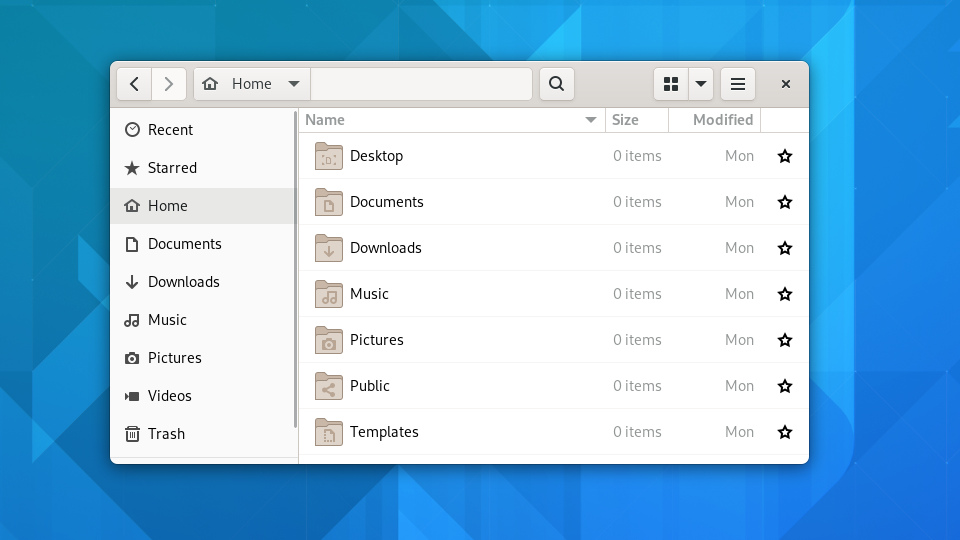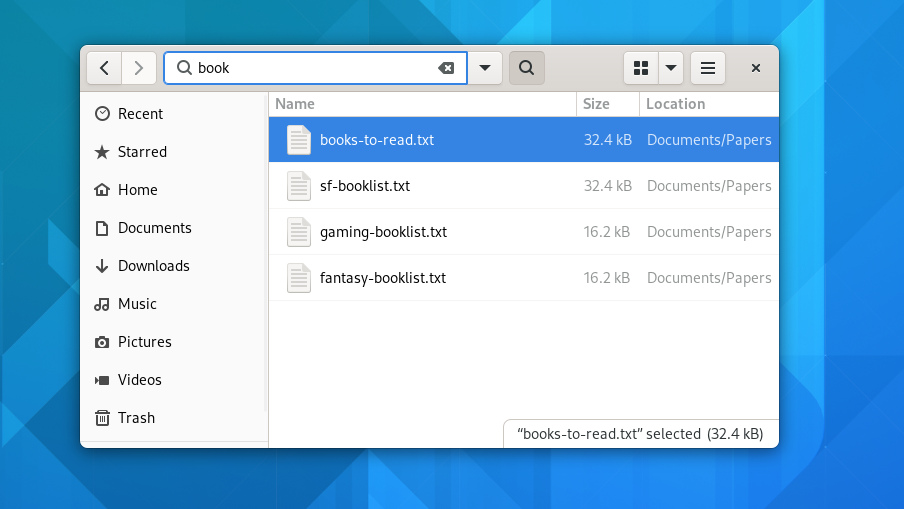Let's face it, the most important thing on a computer is your data. On Windows, you went to My Computer or My Documents, and these locations opened in Windows Explorer. On macOS, you opened the Finder and navigated to your files. On Gnome, you launch the Files application (known as "Nautilus", after the famous submarine piloted by Captain Nemo) to look through your files.

In the left panel are shortcuts to important locations. Your default starting point is almost always Home because that's where all your data lives. You can see the files and folders in your Home in the right panel.
You can use the View button at the top of Nautilus to change your view. Some people like the grid view, with large and hard-to-miss icons, while others are used to a list view.

Even the most organized among us sometimes forgets where a file got saved. If you can't find a file, use the search button at the top of the Nautilus window. Press the Return key to start the search. All results appear in your file list.

Nautilus doesn't just explore files that are directly on your computer. It can also help you manage files on thumbdrives or even on network shares at work or on the Internet.
Other locations of files are available in the left panel of Nautilus. When you attach an external hard drive to your computer, it shows up in the left panel. If you have a network shared folder configured, it also shows up on the left.
You can safely eject harddrives using the eject icon on the left panel.
Try plugging in an external drive, like a USB thumbdrive, and opening it in Nautilus.
Practise moving some files around with Nautilus. Remember that you can launch two nautilus windows at once, and drag and drop files from your Downloads folder, for instance, to your Music folder or Documents folder.
Download a file from the web with Firefox, and look for it in Nautilus.
Eject the thumbdrive.
See if you can find any other ways to eject a thumbdrive.
Throw a file you don't need any more into the trash, and then empty the trash. Hint: The trash is located in the left panel of the Nautilus. Look for an Empty button!